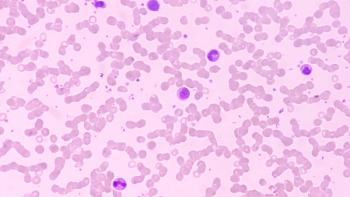
- December 2025
- Volume 19
- Issue 4
FDA Approves Cemiplimab in High-Risk Cutaneous Squamous Cell Carcinoma
The FDA has granted approval to adjuvant cemiplimab treatment for patients with high-risk cutaneous squamous cell carcinoma after surgery and radiation.
The FDA has approved the adjuvant use of cemiplimab-rwlc (Libtayo) in adult patients with cutaneous squamous cell carcinoma (CSCC) with high risk of recurrence after surgery and radiation.1
The efficacy of cemiplimab in CSCC was assessed in the phase 3, randomized, double-blind, multinational C-POST trial (NCT03969004), in which the primary end point was disease-free survival (DFS) of patients with high-risk CSCC who received cemiplimab in the adjuvant setting compared with those who received a placebo after surgery and radiation therapy.2
Median DFS was not reached in the cemiplimab arm (95% CI, not evaluable [NE]-NE) and was 49.4 months (95% CI, 48.5-NE) in the placebo arm (HR, 0.31; 95% CI, 0.20-0.51; P < .0001).1 DFS was defined as the time from randomization to the first disease recurrence as assessed by investigator assessment or death from any cause.
The recommended dose of cemiplimab in patients with high-risk CSCC is 350 mg via intravenous (IV) administration every 3 weeks for 12 weeks, then 700 mg every 6 weeks or 350 mg every 3 weeks until recurrence, unacceptable toxicity, or 48 weeks of treatment have been completed.
Cemiplimab is a monoclonal antibody targeting PD-1. Its prescribing information includes warnings for immune-mediated adverse effects (AEs), infusion-related reactions, complications of allogeneic hematopoietic stem cell transplantation, and embryo-fetal toxicity.
What Do We Know About Cemiplimab?
Data from the first
AEs that led to the discontinuation of treatment occurred in 10% vs 1.5% of patients receiving cemiplimab and placebo, respectively. AEs led to death in 2 patients in each arm of the trial.
Cemiplimab is approved by the FDA for use as a single agent in
C-POST Trial
Patients enrolled in C-POST (n = 415) had to complete adjuvant radiation therapy within 2 to 10 weeks of randomization. Those with autoimmune disease requiring systemic immunosuppressants within 5 years, a history of solid organ transplant, previous allogeneic or autologous stem cell transplantation, uncontrolled HIV, hepatitis B or C infection, or ECOG status greater than or equal to 2 were included in the trial.
Participants were enrolled 1:1 to receive either cemiplimab or placebo, each infused over 30 minutes. Secondary end points included overall survival, freedom from locoregional recurrence, freedom from distant recurrence, cumulative incidence of second primary CSCC tumors, safety, and pharmacokinetics and immunogenicity in human serum.
C-POST was conducted in 2 parts:
- Part 1:
- Patients receive cemiplimab or placebo every 3 weeks via IV. After being treated for 12 weeks, infusions occur every 6 weeks.
- Patients are screened for up to 28 days, treated for about 48 weeks, have an end-of-treatment visit about 30 days after completing study drug treatment, and have a posttreatment, follow-up period of up to about 5 years or until disease recurrence or trial completion.
- Part 2 (optional for participants):
- Patients receiving placebo are allowed to cross over to cemiplimab treatment in the event of disease recurrence.
- Patients are screened briefly before a treatment period of about 96 weeks. Patients receive an end-of-treatment visit about 30 days after the study drug treatment period is completed.
References
- FDA approves cemiplimab-rwlc for adjuvant treatment of cutaneous squamous cell carcinoma. FDA. October 8, 2025. Accessed October 8, 2025. https://www.fda.gov/drugs/resources-information-approved-drugs/fda-approves-cemiplimab-rwlc-adjuvant-treatment-cutaneous-squamous-cell-carcinoma
- Study of adjuvant cemiplimab versus placebo after surgery and radiation therapy in patients with high risk cutaneous squamous cell carcinoma. ClinicalTrials.gov. May 31, 2019. Updated September 19, 2025. Accessed October 8, 2025. https://clinicaltrials.gov/study/NCT03969004
- Adjuvant Libtayo (cemiplimab) significantly improves disease-free survival (DFS) after surgery in high-risk cutaneous squamous cell carcinoma (CSCC) in phase 3 trial. News release. Regeneron Pharmaceuticals. January 13, 2025. Accessed October 8, 2025. https://investor.regeneron.com/news-releases/news-release-details/adjuvant-libtayor-cemiplimab-significantly-improves-disease-free
Articles in this issue
about 2 months ago
FDA Approves Imlunestrant in ESR1+ ER+, HER2- Metastatic Breast CancerNewsletter
Knowledge is power. Don’t miss the most recent breakthroughs in cancer care.




















































































